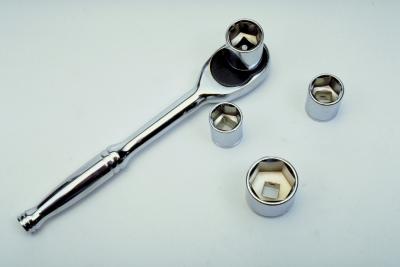
Sometimes, auto repair is not about cost. Granted, that isn’t the case very often, but for some dedicated car owners, the do-it-yourself ethic overwhelms even universal advice advocating for replacement by a professional. Car maintenance is therapy for some, so if the prospect of rodding out your own radiator in the event of a cooling system failure sounds like a weekend well spent, it can be done and it may even be effective.
Remove the radiator cap and open the petcock valve on the underside of the radiator to drain the fluid.
Remove any covers that protect the top of the radiator. These are often plastic and held on with screws.
Remove the upper radiator hose by loosening the screw on the clamp. Carefully pull it away to avoid tearing. Remove the lower radiator hose the same way.
Remove the overflow tank from the engine compartment. Mounting methods vary by vehicle make and model.
Disconnect the fan from the radiator. You should be able to accomplish this by loosening two mounts near the top of the radiator. You will also need to disconnect the fan control module, usually just by removing one or two screws and disconnecting the wire.
Disconnect all the mounting bolts for your radiator. You’ll find these at the four corners of the unit. There could be multiple bolts at each location.
Get some help to lift the radiator out of the car to avoid scratching anything or hurting yourself.
Remove the inlet tank from the radiator. This varies dramatically based on the make and model of the car. Many tanks are welded on, which will require a blowtorch for removal, while some others are fastened with clips that require a special tool to open. Consult your owner’s manual for specific help with the tank removal.
Use a long, thin strip of metal to push into the circulation vents that are exposed now that the tank is off. It’s helpful to run a hose over them while you work the metal in and out of each hole.
Reassemble the radiator according to your specific needs and load it back into the car. Thoroughly tighten each mounting bold and reconnect the fan. Mount the overflow reservoir and reattach any radiator cover you removed.
Buy a flush kit from your local auto parts store and thoroughly flush the radiator. You may want to repeat the entire process according to the kit instructions to make sure you get all the loose material out of the radiator before you refill it.
Mix coolant and water according to the recommendations in your owner’s manual and refill the radiator.